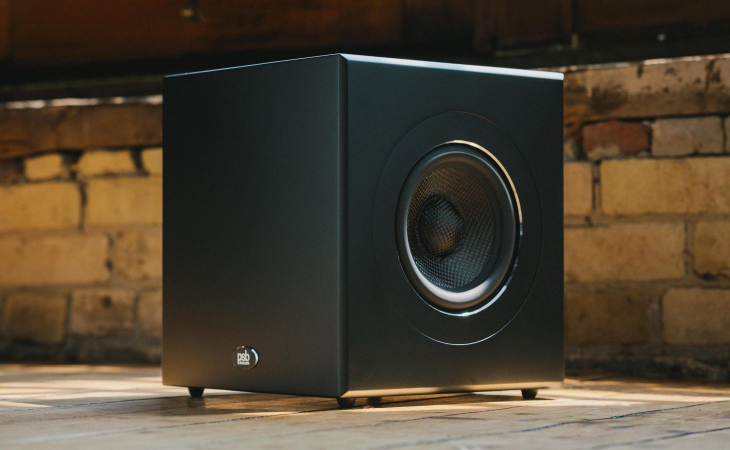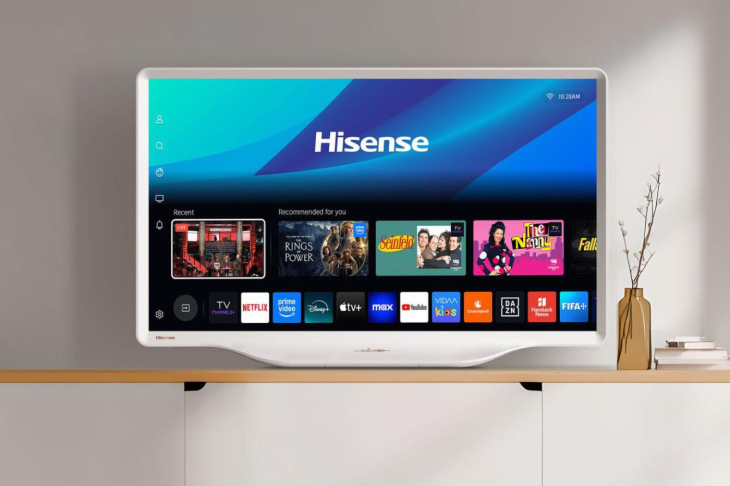Kingston Next-Gen KC3000 SSD PCIe 4.0 NVMe
Kingston Digital Europe ha annunciato KC3000, la sua unità SSD PCIe 4.0 NVMe M.2 per PC desktop e laptop, dotata di velocità pari a 7.000 MB/s di lettura e 7.000 MB/s di scrittura e capacità di storage fino a 4 Terabyte.
Kingston Digital Europe ha oggi annunciato KC3000, la sua unità SSD PCIe 4.0 NVMe M.2 di nuova generazione per PC desktop e laptop, dotata di controller NVMe 4x4 e NAND TLC 3D , con tecnologia Gen4,che permette di raggiungere una velocità pari a 7.000 MB/s di lettura e 7.000 MB/s di scrittura e capacità di storage fino a 4 Terabyte.
Il KC3000 è realizzato con una NAND TLC 3D ad alta densità che è incorporata nel formato M.2 2280 ed è rinforzato con un dissipatore di calore in alluminio e grafene a basso profilo per disperdere efficacemente il calore e mantenere l'unità fresca durante carichi di lavoro intensivi.
"Con l'aumento delle applicazioni ad alto contenuto di dati, i consumatori richiedono soluzioni ad alte prestazioni e alta capacità", ha affermato Tony Hollingsbee, SSD Business Manager di Kingston EMEA. "Con KC3000 abbiamo utilizzato la tecnologia PCIe 4.0 di nuova generazione e siamo in grado di fornire uno storage veloce e affidabile per soddisfare le esigenze di un'ampia gamma di consumatori sul mercato".
KC3000 è attualmente disponibile con capacità da 512 GB, 1024 GB, 2048 GB e 4096 GB. KC3000 è coperto da una garanzia limitata di cinque anni e supporto tecnico gratuito.
Caratteristiche tecniche dichiarate:
- Tecnologia PCIe 4.0 NVMe: Ideale per utilizzo intensivo, con velocità fino a 7,000/7,000MB/s lettura/scrittura
- Maggiore capacità di storage: Aggiorna e gestisce storage con piene capacità fino a 4096GB.
- Migliore flessibilità: Il suo design compatto M.2 è perfetto per sistemi con piccoli formati (SFF), PC desktop e laptop.
- Dissipatore di calore in alluminio e grafene: Grazie alla sua capacità di dissipazione termica, mantiene fresco il drive garantendo il massimo della performance.
- Formato: M.2 2280
- Interfaccia: PCIe 4.0 NVMe
- Capacità: 512GB, 1024GB, 2048GB, 4096GB
- Controller: Phison E18
- NAND: 3D TLC
- Lettura/Scrittura sequenziale:
- 512GB – 7,000/3,900MB/s
- 1024GB – 7,000/6,000MB/s
- 2048GB – 7,000/7,000MB/s
- 4096GB – 7,000/7,000MB/s
- Lettura / Scrittura casuale 4K:
- 512GB – fino a 450,000/900,000 IOPS
- 1024GB – fino a 900,000/1,000,000 IOPS
- 2048GB – fino a 1,000,000/1,000,000 IOPS
- 4096GB – fino a 1,000,000/1,000,000 IOPS
- Bytes totali scritti (TBW)
- 512GB – 400TBW
- 1024GB – 800TBW
- 2048GB – 1.6PBW
- 4096GB – 3.2PBW
Per maggiori info: www.kingston.com
Commenti (2)
-
28 Ottobre 2021, 13:49
Kingston Next-Gen KC3000 SSD PCIe 4.0 NVMe
Prestazioni ragguardevoli ma qualcuno dica a Kingstone che la next gen e' il PCIe 5.0... o si potrebbe gia' dire il 6.0? -
11 Novembre 2025, 14:57
Kingston Next-Gen KC3000 SSD PCIe 4.0 NVMe
While the news article you've linked focuses specifically on the new Kingston KC3000 PCIe 4.0 NVMe SSD , it's excellent that you're considering it in the context of a powerful CPU like a Xeon 16-Core processor . These two components are a perfect match for a high-end workstation or server.
Here's a breakdown of how they complement each other and what it means for a system:
[HEADING=2]Synergy Between the Kingston KC3000 and a Xeon 16-Core CPU[/HEADING]
[LIST=1]
[*]Eliminating the Storage Bottleneck: A multi-core Xeon processor is designed to handle massive, parallel workloads like video editing, 3D rendering, scientific simulations, and managing large databases. A traditional hard drive or even a slower SSD would create a severe bottleneck, leaving the powerful CPU waiting for data. The KC3000, with its read/write speeds up to 7,000 MB/s , ensures the storage subsystem can keep the Xeon's cores fed with data, maximizing productivity and reducing processing time.
[*]PCIe 4.0 Bandwidth: Both the KC3000 and modern Xeon platforms (such as those on the LGA 3647 or LGA 4189 sockets) support the PCIe 4.0 standard. This provides double the bandwidth per lane compared to PCIe 3.0. This means the SSD can operate at its full, advertised speed without being constrained by the motherboard's chipset or CPU, allowing for true peak performance.
[*]Handling Massive Files: The availability of up to 4TB of storage is crucial for the types of tasks a Xeon system is built for. Projects involving high-resolution video footage, complex 3D models, or large virtual machines can easily consume terabytes of space. Having a single, fast, and capacious drive like the KC3000 simplifies storage architecture and provides rapid access to entire project libraries.
[/LIST]
[HEADING=2]Ideal Use Cases for this Combination[/HEADING]
This combination of a Xeon 16-core CPU and a Kingston KC3000 SSD is ideal for:
[LIST]
[*]Content Creation: 8K video editing, color grading, and VFX work.
[*]Engineering & Design: CAD/CAM, finite element analysis (FEA), and computational fluid dynamics (CFD).
[*]Data Science: Working with large in-memory datasets that need to be loaded quickly from storage.
[*]Software Development: Running multiple virtual machines and compiling large codebases.
[/LIST]
[HEADING=2]Important Consideration[/HEADING]
Before purchasing, you must confirm that your specific Xeon motherboard has an M.2 slot that supports PCIe 4.0 x4 . Some older Xeon workstation boards might only have PCIe 3.0 M.2 slots, which would limit the KC3000's speed to around 3,500 MB/s. If an M.2 slot is not available, you can use a PCIe adapter card to install the SSD.
In summary, the Kingston KC3000 is an excellent storage choice to pair with a high-core-count Xeon processor. It leverages the modern PCIe 4.0 interface to deliver the extreme speed and capacity needed to unlock the full potential of the CPU in demanding professional environments.
You can view the full news article here: Kingston Next-Gen KC3000 SSD PCIe 4.0 NVMe

















